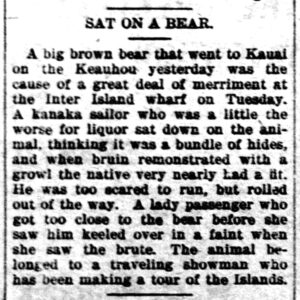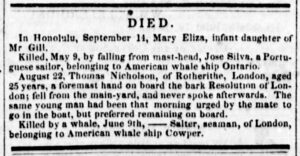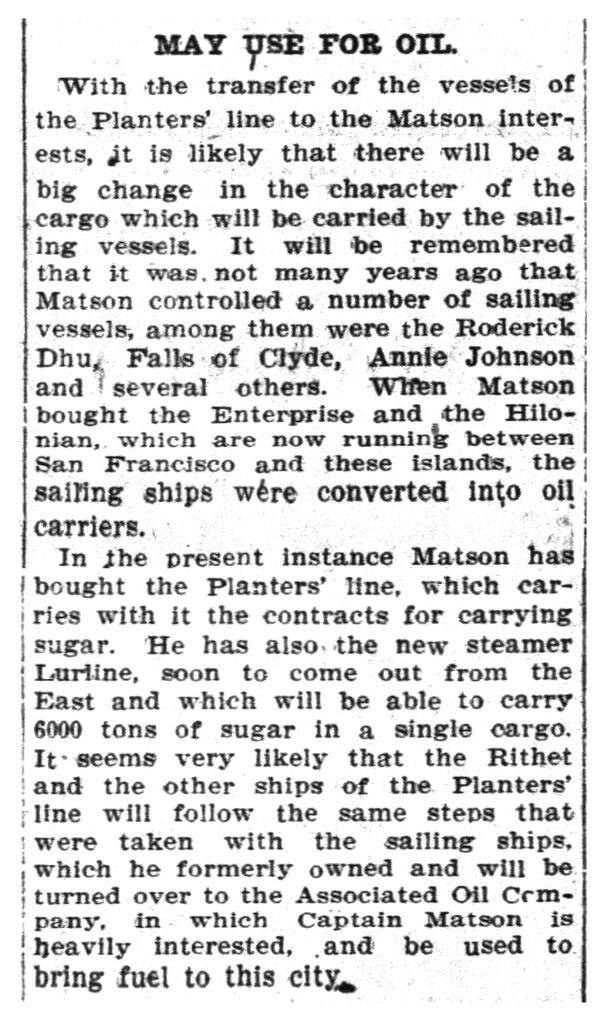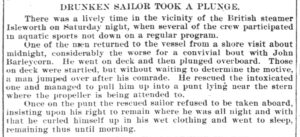New Matson Cranes – A Pilot’s View

BigLift Baffin off the south coast of O‘ahu, approaching Honolulu Harbor. Foss Maritime tug Pi‘ilani is at her stern. 13 April 2019.
The pilots of the Hawaii Pilots Association are tasked with guiding vessels safely in and out of Hawai‘i’s commercial harbors. Every so often, they are challenged by some truly unique jobs. The early morning arrival of the heavy-lift vessel BigLift Baffin on Saturday, 13 April 2019, was one of these. The ship was carrying three new cranes built in Japan by Mitsui for use at Matson’s Sand Island terminal.
The pilot in charge of bringing Biglift Baffin into Honolulu Harbor and over to Pier 52 was Captain Ed Enos (Pilot 16). He was assisted by Captain Tom Heberle (Pilot 17) and Captain Ryan Hopkins (Pilot 22).
Captain Enos kindly answered Maritime Hawai‘i’s questions regarding the planning that occurred prior to BigLift Baffin’s arrival and his experience once on board the ship.
Was this the first time you did a job involving a ship carrying cranes?
Yes. I was very curious—more about the ship itself, its stability, and loading/discharge operation. So, it was a pleasure to finally speak directly to the Captain about the many aspects of their work and learn more about the whole operation. I will try to go down tomorrow and watch the last crane get discharged onto the dock. I would like to see it for myself.
What kind of and how much planning and preparation went into bringing the ship into the harbor?
There was a series of four meetings organized by Matson that involved everyone! A list of people who attended:
- US Coast Guard
- DOT Harbors Division Harbormaster and scheduler
- DOT Harbors Division Engineers
- Pilots
- Foss (tugs)
- Matson Terminals
- Matson Navigation
- Mitsui (crane builder) representative
- BigLift (ship owner) representative
- Rigging company representative
- McCabe Hamilton & Renny Stevedores
At first, meetings were about engineering challenges on the dock (shifting of the load from ship to the pier) and ensuring all facets of the newly added weight were accounted for and “approved” by the State, as the landlord. Much of the discussion involved paperwork. Rather odd.
Later, the meetings started to revolve around the actual operation of the ship’s arrival and transit, then eventually, her shift. Much coordination was involved. Consideration of keeping the harbor clear everywhere the ship would transit, in an effort to allow the very wide beam (taking into account the extended horizontal booms) and not having any “air draft” issues with surrounding vessels and landside objects.

Diagrams showing the relative size of the ship and cranes to the Kapālama Channel and the height of the crane booms above the waterline.
As the date of arrival neared, WEATHER became an issue. The forecasted high winds were a significant part of the discussion. In fact, the last meeting (on the Thursday prior to the Saturday arrival date) was effectively a long discussion of “Plan B” and what would happen if we went out and the Pilot and Captain agreed it was too windy to enter. We had a 15-minute window of time before the Pride of America (behind us) had to enter on her Saturday morning schedule.
We couldn’t go in with the cruise ship [Pride of America] on Pier 1. So, we had to commit to going in…or not…right away at 0600. Lots of pressure.
So, the last meeting was a lengthy discussion on the “consequences” of not going in and how that would impact all the other maritime stakeholders. Remember, we had already cleared Kapālama Channel for the BigLift Baffin transit. To delay it another 24 hours would cause more challenges for all concerned. In the end, we decided to convene another meeting at 1000 on Saturday morning to immediately start planning for another transit attempt on Sunday AM, as Plan B.
I learned later (after the Saturday arrival) that once we started in and the folks at Matson saw we were coming in, they were VERY excited to see it all evolve on schedule and NOT have to worry about the Plan B effort.

BigLift Baffin approaching Kapālama Channel, escorted by the Harbor Police boat. Some of the older Matson cranes are on the pier at right. 13 April 2019.
How much of a concern were the weather conditions (wind and rain) immediately before and during the arrival?
Just last week, we installed a new wind anemometer on a light pole on Pier 1. This is something we’ve been trying to do for a long time. We partnered with PacIOSS, DOT Harbors, and HSI Stevedores to get an instrument upon a pole, 65 feet up high, and in an area of “clean wind flow” at Pier 1. It is powered and transmits data in real time to a website people have access to via the internet. It’s still being fine-tuned but we were able to get the raw feed (until the public has access) and were monitoring it very carefully over the last few days.
I also reached out to the local National Weather Service folks, got the contact info for a guy who stands watch in the forecasting station, and explained our project. He directed me to a place on their website for more direct info. He also explained that the more info they received from us, regarding “local” weather reports at specific places on the island, the better their forecasting model can deliver more accurate info to everyone. So, we started sending them info from our new site on the pier, in an effort to help them provide better info.
What were the main/particular challenges for you as the pilot in charge?
Understanding the dimensions of the ship, relative to the area we had to transit. Having the PPUs to supplement our “visual” assessment in real time, was a big help. Tom [Heberle] set up a “safety corridor” to keep the vessel in, on the PPU I was using. As long as I stayed inside this area, I knew I was in a clear spot to transit. If I fell out of this zone due to the winds, I would instantly know and could correct everything as needed. Otherwise, the final determination to go in would be with me (though in reality, I would have discussed with Tom and Ryan [Hopkins], who was also there). But, in spite of the winds that were prevalent that morning, once onboard, the early morning squall seemed to cause the winds to back off and made it perfect to transit in.

Captain Ed Enos’ view from the bridge of BigLift Baffin, showing a PPU. 13 April 2019. (Photo courtesy of Captain Ed Enos)
What were the roles of Captain Heberle and Captain Hopkins?
Tom’s specific role was to set up the PPU for me, as I spoke with the Captain and conducted the MPX (Master Pilot exchange). Since there was a time component, it was an important role to have that PPU prepped while I was discussing details of the ship and transit in with the Captain. While in transit, Tom was providing info to me from his own PPU regarding the set and drift as I conned the ship in. Ryan ended up playing a critical role, though we hadn’t thought about it until it occurred. He stood outside on the starboard bridge wing and relayed distances off the pier on the mauka side of the channel, as I hugged that side to stay away from the Matson shore cranes at Pier 53. His visual confirmation helped as I transited within the safety corridor laid out on the PPU. Can’t trust these electronic devices entirely. So having an extra set of eyes helped a lot.
How was this job different from handling and tying up other large ships in the Kapālama Channel?
The transit was relatively the same. Until we neared the Matson shore cranes and lined up in the main basin to enter Kapālama Channel Reach, it felt like any other ship job. But as we neared passing by the cranes, our pilot boat helped confirm visually everything was okay. Once we passed the cranes, the docking became the focus. I believed I treated the docking like any other but kept the ship from “banging” alongside. I really made an effort to touch the dock as softly as possible. It was frustrating for a few minutes as there was no bridge mark at first. So we weren’t sure where to land the ship, but knew it was critical to the operation. However, in the end, it worked out.
Do you have anything else you would like to comment on that you feel would interest the general public?
While on the ship, underneath the cranes, as we proceeded in, you really do NOT have the sense of how big everything is on board. I only appreciated it all after the job was done and saw pictures from a drone, the Tower, and the shore, that gave a better perspective on the ship and her cargo. I don’t think people really appreciate that—how could they? While driving in, I stayed in the centerline all the way in until the docking and then stepped outside. It was only at that moment, in daylight, I realized how high up and far outboard everything was.

View of the cranes and pier from the port bridge wing of BigLift Baffin. 13 April 2019. (Photo courtesy of Captain Ed Enos)

Left to Right: Captain Ryan Hopkins, Captain Ed Enos, and Captain Tom Heberle on board pilot boat Ahua Point with BigLift Baffin in the background. 13 April 2019.
Mahalo nui loa to the Hawaii Pilots Association.












I love this post so much! You’re doing a great service sharing some of the activities that go on in a busy working harbour. The photography is wonderful. Thanks for sharing!!
Mahalo Buck! I appreciate your comment. I hope the general public can have a better understanding of what goes on in the harbor.